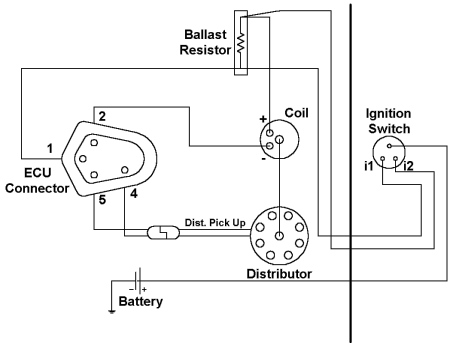- Local time
- 3:52 PM
- Joined
- Apr 13, 2012
- Messages
- 35,568
- Reaction score
- 125,319
- Location
- Granite Bay CA
This situation doesn't happen often but when it does, it is really annoying. If I were half crazy, I'd think that I have Christine's cousin in my garage.
MOST of the time, the car lights up when I turn the key. Sometimes though, it cranks faster than usual and does not start. This happened Sunday when I wanted to pull the car out to work on another car.
The ignition switch was replaced in 2002. Everything else is newer than that. Distributor, coil, ECU, underhood wire harness, starter relay and starter. I modified the dash harness by bypassing the ammeter, running a continuous wire from the starter relay to the interior power junction similar to the MAD electrical guideline.
Years ago when trying to start a fresh rebuilt engine, I had a no spark. I changed the distributor and it started up. Over the years I have had it happen again and swapped in a different part, sometimes it was a coil or an ECU. It would then fire up and run fine. Oddly, these parts still worked when I used them on another car later. See what I mean about Christine? I have had a no-spark and tried Starting fluid just for kicks and sometimes it started and ran, sometimes nothing.
I always check for grounds, check for power to the coil, spark to the plugs but it really is as if the car just didn't want to start for no apparent reason.
I hate being the type of guy that just throws parts at a problem. Still, the only part that I have not replaced since this started is the ignition switch itself. I have plenty of originals here that I can plug in to test the next time this happens. I'll keep this in mind the next time this happens but in the meantime......Any suggestions??

MOST of the time, the car lights up when I turn the key. Sometimes though, it cranks faster than usual and does not start. This happened Sunday when I wanted to pull the car out to work on another car.
The ignition switch was replaced in 2002. Everything else is newer than that. Distributor, coil, ECU, underhood wire harness, starter relay and starter. I modified the dash harness by bypassing the ammeter, running a continuous wire from the starter relay to the interior power junction similar to the MAD electrical guideline.
Years ago when trying to start a fresh rebuilt engine, I had a no spark. I changed the distributor and it started up. Over the years I have had it happen again and swapped in a different part, sometimes it was a coil or an ECU. It would then fire up and run fine. Oddly, these parts still worked when I used them on another car later. See what I mean about Christine? I have had a no-spark and tried Starting fluid just for kicks and sometimes it started and ran, sometimes nothing.
I always check for grounds, check for power to the coil, spark to the plugs but it really is as if the car just didn't want to start for no apparent reason.
I hate being the type of guy that just throws parts at a problem. Still, the only part that I have not replaced since this started is the ignition switch itself. I have plenty of originals here that I can plug in to test the next time this happens. I'll keep this in mind the next time this happens but in the meantime......Any suggestions??




















